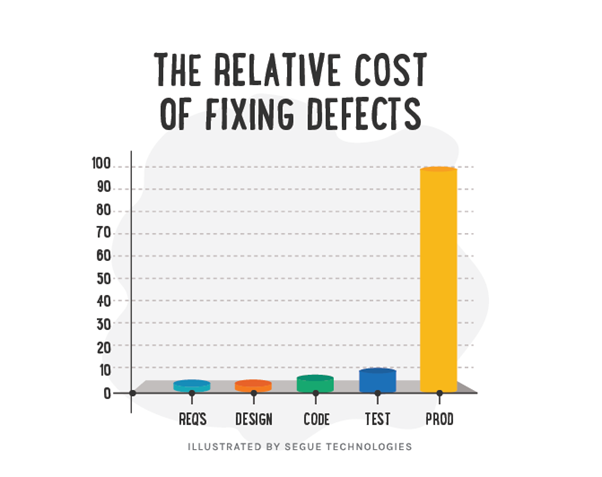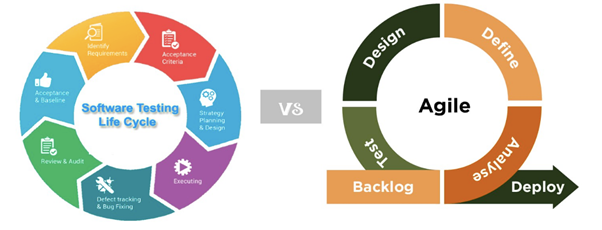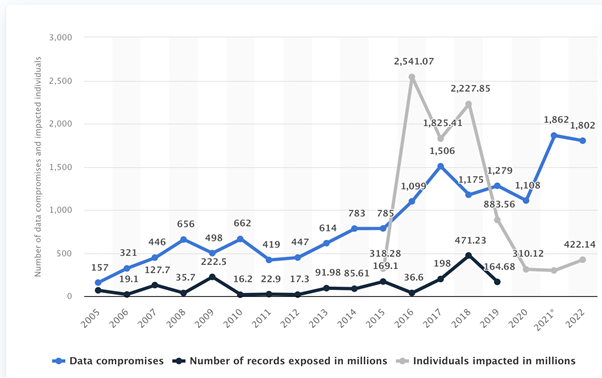Do you know that there is an inherent cost associated with bugs in your software project/product? As per a 2020 report, the cost of poor software quality (or cost of bugs) is estimated at around $607 billion[1] for the United States alone. Also, the cost of the bug depends on the stage at which the same was unearthed during the process of software testing.
Since there is an exponential increase in the cost of fixing bugs/defects, it is important to consider software testing during the early stages of product development. This is where teams can leverage Agile Testing, a software testing methodology that is built on the same premises as Agile development. Here, software development and testing go hand-in-hand so that the code is tested on a continuous basis.
Image Source
As seen so far, it is imperative for software teams to give equal weightage to development & testing else buggy features might result in a substandard end-user experience! The integral question is “Is software testing only limited to identifying bugs”? Well, bug detection is just one of the many things that is possible with software testing. ‘Software Testing Objectives’ is the main point of discussion in this blog.
By the end of this blog, you would be in a much better position to leverage software testing beyond just defect identification and tracking! So, let’s get started…
[Note: Product, Website, and Application are used interchangeably throughout the course of this blog]
What Is Software Testing?
Software Testing is the process of evaluating the software product for identifying bugs/issues in the product. Improving software quality is the core purpose of running software tests. A mix of manual and automated tests are normally conducted at every juncture of software development. This is to make sure that a fully-functional application is released to the end-users of the product.
In a traditional SDLC (Software Development LIfe Cycle), testing is normally conducted at the end of the software development phase but this is not the case with Agile testing. In an Agile environment, testers and developers work in close sync since the testing process is carried out in an iterative (or continuous) manner.
Agile vs. Software Testing Life Cycle
As seen in Agile testing, the tests are conducted whenever there are any changes in the development code. Owing to the continuous nature of testing, not even a single line of untested code gets into the repository! Also, the tests are conducted in shorter sprints/cycles which eventually results in reducing the developer feedback time. All of this results in improving the product quality whilst accelerating the speed at which development and testing is done! However, covering every aspect of Agile testing is beyond the scope of this blog.
Since software testing plays such an integral role in enhancing the application’s quality, it is essential to onboard an experienced QA testing company to reap the maximum benefits of testing.
Also Read: QA Testing Process From A-Z
Major Objectives Of Software Testing
Before we deep dive into the objectives, it is important to reiterate that testing must be performed from different angles like functional, non-functional, security, accessibility, and more. We would look into it in the latter section of this blog.
With the platform all set, let’s look at some of the major objectives of software testing:
Identification of Bugs
The first and foremost goal of software testing is to improve software quality by identifying bugs in the application. Irrespective of the size or complexity of the application, tests are conducted on a continuous basis to unearth issues and build a high-quality product.
Tests that require human intervention (or cannot be automated) are conducted using manual testing. On the other hand, test automation frameworks (or tools) are leveraged to run tests in a CI/CD pipeline. Such an approach minimizes the developer feedback loop and continually improves the software quality at every stage of application development.
Also Read: Guide To Write A Quality Bug Report
Improvement of software quality
As mentioned in the earlier point, the primary intent of running software tests is to locate potential bugs in the application. These bugs are then prioritized on a severity basis, post which they are assigned to the respective developers for fixation.
Example:
A simple bug in a Banking application could be an incorrect display of message string when the user successfully logs into the application. This can be considered a low severity issue. On the other hand, users unable to sign-up (or even login) to the Banking application can be considered a blocker (or a very high-severity issue). This is because ‘sign-up’ and ‘login’ are the very first steps that any user performs in the application.
Sample Error String
Irrespective of the severity of the issue(s), software testing plays an instrumental role in improving the quality of the application. Without QA (Quality Assurance) or testing, you cannot release the application in the market.
Enhancement of Security
As per reports, close to 422 million US consumers were impacted by data compromises in 2022. The compromises spanned across data leaks, data exposure, hacking attacks, and more.
Annual number of data compromises and individuals impacted in the United States from 2005 to 2022
With an increase in the number of internet users, it becomes imperative to focus on the security aspects of the application. This is because security compromises (of any type/severity) will lead to loss in customer confidence and/or losses on the financial side.
Security tests like penetration tests, compliance tests, network security tests, etc. can be leveraged to unearth security vulnerabilities in the application. In many tests, internal testers don the hats of the hacker to identify security loopholes. Network security testing ensures that any form of data is always encrypted & secured, whether it is in motion or at rest!
Hence, security testing must be leveraged to validate different aspects of the application, especially from a security standpoint. As security testing is extremely important, it is wise to onboard an experienced QA testing services company that has an ample amount of expertise in security testing!
Enhancement of scalability and reliability
Many of us would have witnessed outages[2] when shopping on popular e-commerce platforms, particularly when there is significantly high traffic on the website!
Image Source
The main reason for such an experience could be unprecedented load on the website, causing hiccups to the end-users of the website (or application). This is where load testing can be valuable, as it helps in validating the application’s behavior when it is subjected to different kinds of load. Load testing falls in the category of performance testing, a non-functional type of testing that helps in improving the scalability, reliability, responsiveness, and speed aspects of the application.
Some of the major forms of performance testing are:
- Load testing
- Stress testing
- Volume testing
- Soak testing
- Endurance testing
A highly secure, reliable, and scalable application can have a long-lasting impact on the end-user experience. Performance testing helps in ensuring that your application is built for scale, thereby ensuring that there are no outages at times when there is a high load on the application!
Meeting Compliance Standards
Whether you are building a custom mobile application or a SaaS project or any other software product; it is essential to follow laws & principles related to software privacy, and more. For example, a ISO 9001 certification means that the respective product/service meets the customer requirements and regulatory standards.
The application must adhere to GDPR (General Data Protection Regulation) if your customers are located in the UK region. On similar lines, the application must adhere to CCPA (California Consumer Privacy Act) compliance if your target market is the US. Financial losses, brand damage, security breaches, etc. are some of the consequences[3] of non-compliance.
This is where software testing can play a key role in ensuring that the product/application adheres to the necessary regulatory requirements. Considering the criticality of security and compliance, it is important to have tests in place that not only help in building a fully-functional, but also compliant software product!
It’s A Wrap
Like software development, emphasis must also be laid on software testing so that a functional, secure, reliable, and scalable application is shipped to the target customers. You need to focus on different types of tests – unit, integration, performance, security, acceptance, compatibility, and exploratory testing.
A software testing company like KiwiQA can play a significant role in giving wings to software testing strategy so that your team can ship the desired application (or product) at a faster pace 🚀 🚀












